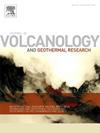Volcano Seismic Event Recognition and OOD Detection using Multi-Representation Deep Learning: Insights from Nevados del Chillán
IF 2.3
3区 地球科学
Q2 GEOSCIENCES, MULTIDISCIPLINARY
Journal of Volcanology and Geothermal Research
Pub Date : 2025-07-10
DOI:10.1016/j.jvolgeores.2025.108406
引用次数: 0
Abstract
Deep learning models have significantly improved automatic volcano-seismic event classification but struggle with previously unseen signals due to their closed-set assumption, leading to confident misclassification of external events, as seismic sensors often capture non-volcanic movements. This study ad- dresses this limitation by integrating a simple and computationally lightweight K-Nearest Neighbors (KNN)-based Out-of-Distribution (OOD) detection mod- ule into a CNN classifier, dividing the classification problem in a trade-off between the classification of in-distribution volcanic events (ID) and the iden- tification of non-volcanic events (OOD). We explored an input representation that integrates waveforms and frequency spectrum alongside spectrograms using Class Activation Maps to evaluate their impact in learning. We found that combining waveforms with spectrograms improves ID performance as well as OOD sensitivity. Experimental results on a Nevados del Chillán Vol- canic Complex database show that our approach reaches a mean accuracy of 93.5 % for non volcanic classes (correctly classified as OOD) maintaining 84.3 % for the classification of volcanic classes (ID) compared to 73.8 % with the only-spectrogram representation. These findings demonstrate that combining multi-domain feature representations with a lightweight KNN-based OOD module raises mean OOD accuracy from 73.8 % to 93.5 % while pre- serving an 84.3 % ID F1-score, thereby improving the reliability of automated volcano-seismic monitoring and provides evidence that the approach could be incorporated into deployable, multi-volcano systems after further validation on additional sites.

使用多表示深度学习的火山地震事件识别和OOD检测:来自内华达州的见解Chillán
深度学习模型显著改善了火山地震事件的自动分类,但由于其封闭集假设,难以处理以前未见过的信号,导致外部事件的自信错误分类,因为地震传感器经常捕获非火山运动。本研究通过将基于k近邻(KNN)的简单且计算量轻的out -distribution (OOD)检测模块集成到CNN分类器中来解决这一限制,在分布内火山事件(ID)的分类和非火山事件(OOD)的识别之间进行权衡,划分分类问题。我们探索了一种输入表示,它将波形、频谱和谱图结合在一起,使用类激活图来评估它们对学习的影响。我们发现,将波形与谱图相结合可以提高识别性能和OOD灵敏度。在内华达州del Chillán Vol- canic Complex数据库上的实验结果表明,我们的方法对非火山类(正确分类为OOD)的平均准确率为93.5%,对火山类(ID)的分类准确率为84.3%,而仅用谱图表示的准确率为73.8%。这些发现表明,将多域特征表示与基于knn的轻量级OOD模块相结合,将平均OOD精度从73.8%提高到93.5%,同时预服务84.3%的ID f1分数,从而提高了自动化火山地震监测的可靠性,并提供了证据,表明该方法可以在其他站点进一步验证后纳入可部署的多火山系统。
本文章由计算机程序翻译,如有差异,请以英文原文为准。
求助全文
约1分钟内获得全文
求助全文
来源期刊
CiteScore
5.90
自引率
13.80%
发文量
183
审稿时长
19.7 weeks
期刊介绍:
An international research journal with focus on volcanic and geothermal processes and their impact on the environment and society.
Submission of papers covering the following aspects of volcanology and geothermal research are encouraged:
(1) Geological aspects of volcanic systems: volcano stratigraphy, structure and tectonic influence; eruptive history; evolution of volcanic landforms; eruption style and progress; dispersal patterns of lava and ash; analysis of real-time eruption observations.
(2) Geochemical and petrological aspects of volcanic rocks: magma genesis and evolution; crystallization; volatile compositions, solubility, and degassing; volcanic petrography and textural analysis.
(3) Hydrology, geochemistry and measurement of volcanic and hydrothermal fluids: volcanic gas emissions; fumaroles and springs; crater lakes; hydrothermal mineralization.
(4) Geophysical aspects of volcanic systems: physical properties of volcanic rocks and magmas; heat flow studies; volcano seismology, geodesy and remote sensing.
(5) Computational modeling and experimental simulation of magmatic and hydrothermal processes: eruption dynamics; magma transport and storage; plume dynamics and ash dispersal; lava flow dynamics; hydrothermal fluid flow; thermodynamics of aqueous fluids and melts.
(6) Volcano hazard and risk research: hazard zonation methodology, development of forecasting tools; assessment techniques for vulnerability and impact.

 求助内容:
求助内容: 应助结果提醒方式:
应助结果提醒方式:


